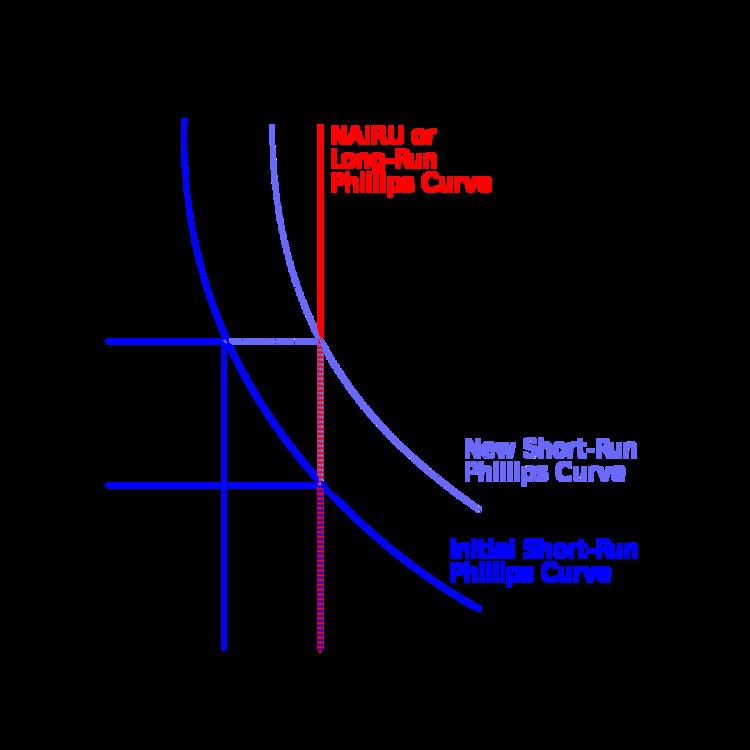 | ||
In macroeconomics, the cost of business cycles is the decrease in social welfare, if any, caused by business cycle fluctuations.
Contents
- Basic intuition
- Lucas formula
- Mathematical representation and formula
- Risk aversion and the equity premium puzzle
- References
Nobel economist Robert Lucas proposed measuring the cost of business cycles as the percentage increase in consumption that would be necessary to make a representative consumer indifferent between a smooth, non-fluctuating, consumption trend and one that is subject to business cycles.
Under the assumptions that business cycles represent random shocks around a trend growth path, Robert Lucas argued that the cost of business cycles is extremely small, and as a result the focus of both academic economists and policy makers on economic stabilization policy rather than on long term growth has been misplaced. Lucas himself, after calculating this cost back in 1987, reoriented his own macroeconomic research program away from the study of short run fluctuations.
However, Lucas' conclusion is controversial. In particular, Keynesian economists typically argue that business cycles should not be understood as fluctuations above and below a trend. Instead, they argue that booms are times when the economy is near its potential output trend, and that recessions are times when the economy is substantially below trend, so that there is a large output gap. Under this viewpoint, the welfare cost of business cycles is larger, because an economy with cycles not only suffers more variable consumption, but also lower consumption on average.
Basic intuition
If we consider two consumption paths, each with the same trend and the same initial level of consumption – and as a result same level of consumption per period on average – but with different levels of volatility, then, according to economic theory, the less volatile consumption path will be preferred to the more volatile one. This is due to Risk aversion on part of individual agents. One way to calculate how costly this greater volatility is in terms of individual (or, under some restrictive conditions, social) welfare is to ask what percentage of her annual average consumption would an individual be willing to sacrifice in order to eliminate this volatility entirely. Another way to express this is by asking how much an individual with a smooth consumption path would have to be compensated in terms of average consumption in order to accept the volatile path instead of the one without the volatility. The resulting amount of compensation, expressed as a percentage of average annual consumption, is the cost of the fluctuations calculated by Lucas. It is a function of people's degree of risk aversion and of the magnitude of the fluctuations which are to be eliminated, as measured by the standard deviation of the natural log of consumption.
Lucas' formula
Robert Lucas' baseline formula for the welfare cost of business cycles is given by (see mathematical derivation below):
where
It is straight forward to measure
As an illustrative example consider the case of log utility (see below) in which case
In other words, eliminating all the fluctuations from a person's consumption path (i.e. eliminating the business cycle entirely) is worth only 1/20 of 1 percent of average annual consumption. For example, an individual who consumes $50,000 worth of goods a year on average would be willing to pay only $25 to eliminate consumption fluctuations.
The implication is that, if the calculation is correct and appropriate, the ups and downs of the business cycles, the recessions and the booms, hardly matter for individual and possibly social welfare. It is the long run trend of economic growth that is crucial.
If
or 1/5 of 1 percent. An individual with average consumption of $50,000 would be willing to pay $100 to eliminate fluctuations. This is still a very small amount compared to the implications of long run growth on income.
One way to get an upper bound on the degree of risk aversion is to use the Ramsey model of intertemporal savings and consumption. In that case, equilibrium real interest rate is given by
where
which in turn, combined with estimates given above yields a cost of fluctuations as
which is still extremely small (13% of 1%).
Mathematical representation and formula
Lucas sets up an infinitely lived representative agent model where total lifetime utility(
In the case of the a certain consumption path, consumption in each period is given by
where
In the case of a volatile, uncertain consumption path, consumption in each period is given by
where
We find this cost of fluctuations by setting
and solving for
For the case of isoelastic utility, given by
we can obtain an (approximate) closed form solution which has already been given above
A special case of the above formula occurs if utility is logarithmic,
An alternative, more accurate solution gives losses that are somewhat larger, especially when volatility is large.
Risk aversion and the equity premium puzzle
However, a major problem related to the above way of estimating
In a survey of the implications of the equity premium, Simon Grant and John Quiggin note that 'A high cost of risk means that recessions are extremely destructive'.
